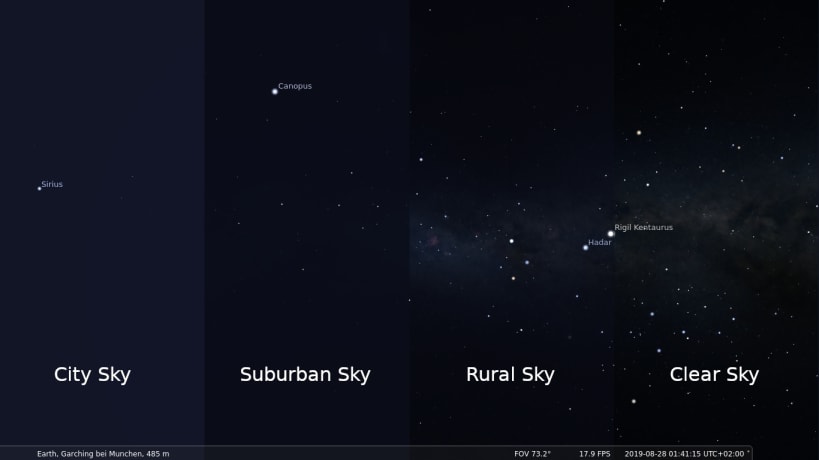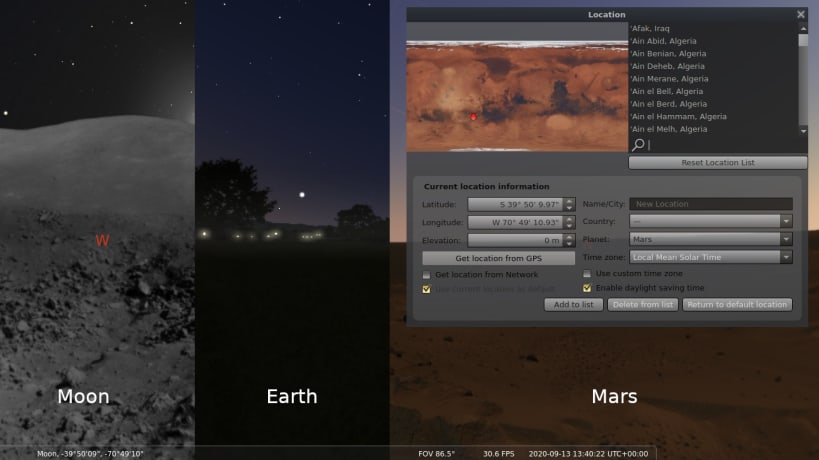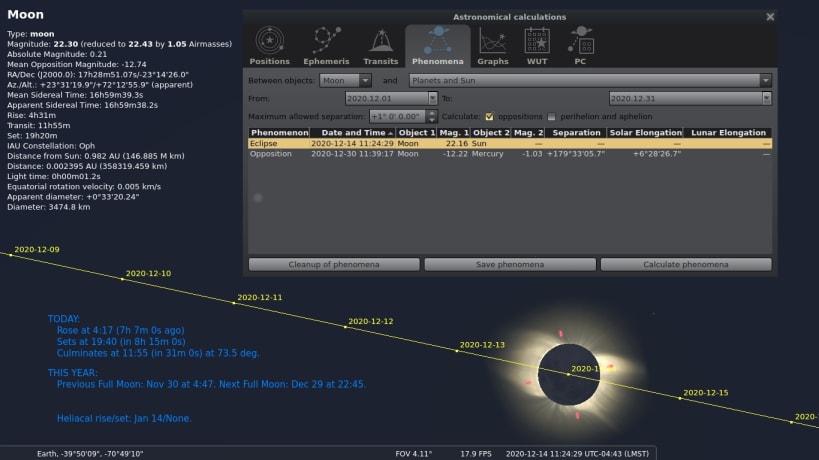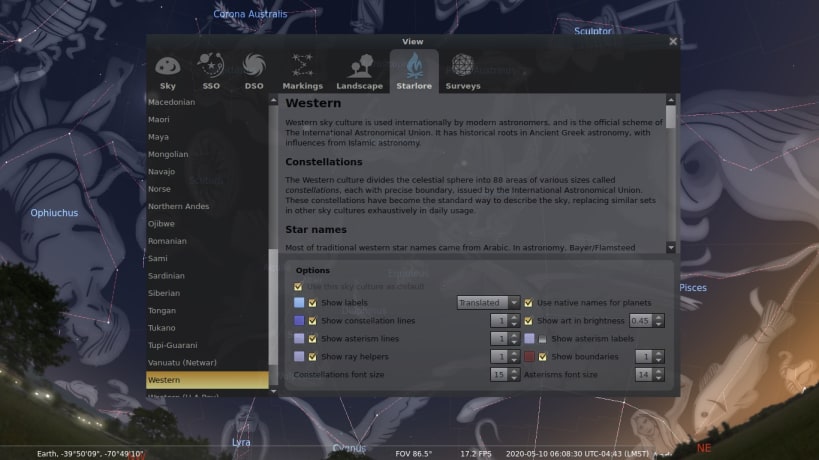






Stellarium renders 3D photo-realistic skies in real time with OpenGL. It displays stars, constellations, planets and nebulae, and has many other features including multiple panoramic landscapes, fog, light pollution simulation and a built-in scripting engine.
Stellarium comes with a star catalogue of about 600 thousand stars and it is possible to download extra catalogues with up to 210 million stars.
Stellarium has multiple sky cultures - see the constellations from the traditions of Polynesian, Inuit, Navajo, Korean, Lakota, Egyptian and Chinese astronomers, as well as the traditional Western constellations.
It is also possible to visit other planets in the solar system - see what the sky looked like to the Apollo astronauts, or what the rings of Saturn looks like from Titan.
If the app crashes in Wayland try :
snap run stellarium-daily.stellarium -platform xcb
User Guide :
https://github.com/Stellarium/stellarium/releases/download/v25.1/stellarium_user_guide-25.3-1.pdf
Translate in Your Own Language : https://www.transifex.com/stellarium/stellarium
Try Web Version : https://stellarium-web.org/
You are about to open
Do you wish to proceed?
Thank you for your report. Information you provided will help us investigate further.
There was an error while sending your report. Please try again later.
Snaps are applications packaged with all their dependencies to run on all popular Linux distributions from a single build. They update automatically and roll back gracefully.
Snaps are discoverable and installable from the Snap Store, an app store with an audience of millions.

Snap is available for Red Hat Enterprise Linux (RHEL) 8 and RHEL 7, from the 7.6 release onward.
The packages for RHEL 7, RHEL 8, and RHEL 9 are in each distribution’s respective Extra Packages for Enterprise Linux (EPEL) repository. The instructions for adding this repository diverge slightly between RHEL 7, RHEL 8 and RHEL 9, which is why they’re listed separately below.
The EPEL repository can be added to RHEL 9 with the following command:
sudo dnf install https://dl.fedoraproject.org/pub/epel/epel-release-latest-9.noarch.rpm
sudo dnf upgrade
The EPEL repository can be added to RHEL 8 with the following command:
sudo dnf install https://dl.fedoraproject.org/pub/epel/epel-release-latest-8.noarch.rpm
sudo dnf upgrade
The EPEL repository can be added to RHEL 7 with the following command:
sudo rpm -ivh https://dl.fedoraproject.org/pub/epel/epel-release-latest-7.noarch.rpm
Adding the optional and extras repositories is also recommended:
sudo subscription-manager repos --enable "rhel-*-optional-rpms" --enable "rhel-*-extras-rpms"
sudo yum update
Snap can now be installed as follows:
sudo yum install snapd
Once installed, the systemd unit that manages the main snap communication socket needs to be enabled:
sudo systemctl enable --now snapd.socket
To enable classic snap support, enter the following to create a symbolic link between /var/lib/snapd/snap and /snap:
sudo ln -s /var/lib/snapd/snap /snap
Either log out and back in again or restart your system to ensure snap’s paths are updated correctly.
To install Stellarium, simply use the following command:
sudo snap install stellarium-daily
Browse and find snaps from the convenience of your desktop using the snap store snap.

Interested to find out more about snaps? Want to publish your own application? Visit snapcraft.io now.